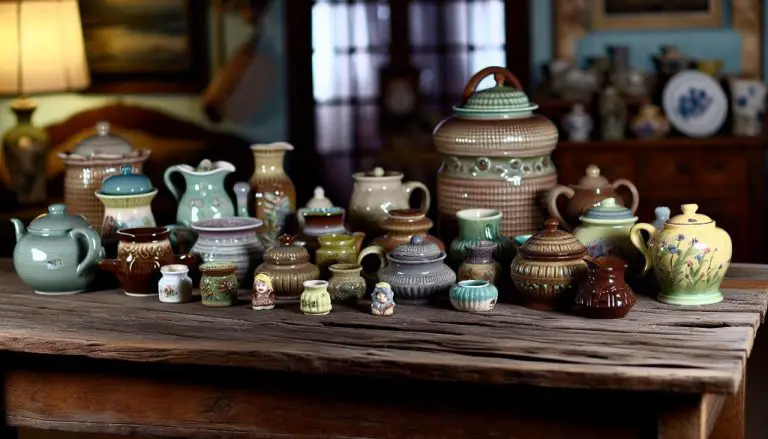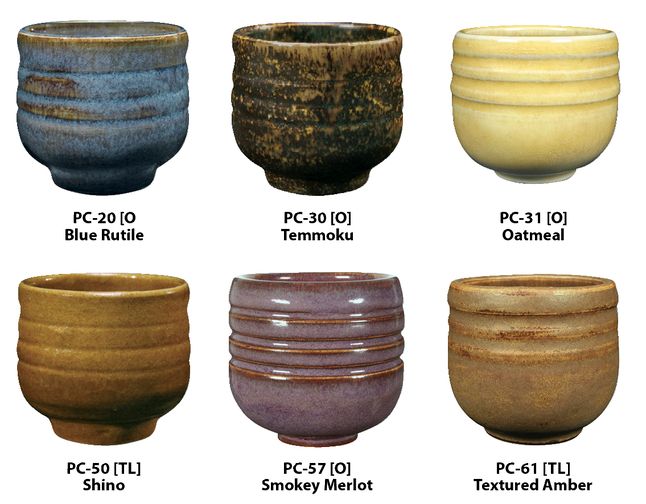Why Does Clay Turn Red?
Clay is a common type of fine-grained natural soil composed primarily of minerals like silica, alumina, and iron oxides. Clays can naturally exhibit a range of colors from white and gray to red and brown. The red coloration of clay is a notable phenomenon and the focus of this article. While clay deposits are abundant worldwide, red clay is more prominent in certain regions. The distinct crimson hue of red clay stems from chemical changes that occur as the clay is exposed to the atmosphere and weathering processes.
Chemical Composition of Clay
Clay is made up of a variety of different minerals and chemical compounds. The most abundant components in clay are silica and alumina, which are silicon dioxide (SiO2) and aluminum oxide (Al2O3), respectively. Clays also contain varying amounts of water trapped within the mineral structure. This water content can range from 5-20% of a clay’s total weight.
In addition to silica and alumina, clay contains iron oxides such as hematite (Fe2O3) and maghemite (Fe2O3). These iron oxide compounds are what give clay its distinctive red and yellow colors when hydrated. The specific mineral composition and the percentages of each mineral present determine the exact properties and color of the clay. Other minor components in clay can include alkaline and alkaline earth metals such as sodium, magnesium, and calcium. Trace amounts of titanium, manganese, and even organic matter may also be present.
Iron Oxides in Clay
The main minerals that give clay its red color are iron oxides, specifically hematite and maghemite. Iron oxides are compounds of iron and oxygen that occur naturally as minerals. Hematite has the chemical formula Fe2O3 and is one of the most abundant iron oxides, giving it a metallic gray color. Maghemite has the formula Fe2O3 as well but differs in its crystal structure, resulting in a reddish-brown color.
These iron oxide minerals are commonly found in clay deposits as a result of the chemical weathering of other iron-bearing minerals. As clay weathers over long periods of time, iron is released from minerals like biotite, olivine, and pyroxene. This dissolved iron then oxidizes into hematite and maghemite, staining the clay deposits a distinctive red hue. The concentration and type of iron oxides present determines the exact shade of red. Higher amounts of hematite lead to a deeper red, while higher maghemite shifts it towards reddish-brown.
The reddish color persists even when the clay is fired at high temperatures. This is because iron oxides have high thermal stability compared to other mineral pigments. Hematite and maghemite undergo transformations during firing but still retain their essential chemical composition and red color. This makes natural red clays ideal for producing reddish ceramics and bricks.
Weathering of Clay
Clay is exposed to weathering processes at the earth’s surface that cause chemical changes to the iron present within it. Weathering refers to the breakdown and alteration of rocks, soils and minerals through interactions with the atmosphere and environment. For clay, the key weathering processes are oxidation and hydration.
Oxidation occurs when iron in clay minerals reacts with oxygen. This happens as clay is exposed to air during erosion and as it resides at the earth’s surface. The oxygen removes electrons from iron atoms, changing the iron’s charge from Fe2+ (ferrous) to Fe3+ (ferric). This oxidized iron is what gives red clay its characteristic red tones.
Hydration also plays a role during clay weathering. Water interacts with clay to cause hydrolysis, splitting molecular bonds within the minerals. This creates more sites for oxygen to penetrate the clay and oxidize iron. So exposure to both oxygen and water facilitates the oxidation process that turns clay red.
Reducing Environments
Clay can also exhibit colors other than red when the iron in the clay is exposed to reducing environments, or environments with little to no oxygen present. When oxygen is scarce, the iron remains in its ferrous form (Fe2+), which leads to gray, green, blue and other muted clay colors. This is because ferrous iron compounds tend to be colorless, while ferric iron compounds (Fe3+) are responsible for the red and yellowish colors.
Environments with low oxygen levels that create reducing conditions include waterlogged soils, sediments at the bottom of ponds/lakes, and clay deposits buried deep underground. In these oxygen-depleted environments, the iron in clay is prevented from oxidizing into the ferric state and the vibrant red hues do not develop.
The specific color of reduced clay depends on the composition trace elements present. Small amounts of ferrous iron produce grayish colors, while greens and blues can result from ferrous iron interacting with other elements like manganese. When exposed to air, these reduced clays will begin to oxidize and turn red or yellow after some time.
Firing Clay
The main process that causes clay to turn red is firing it at high heat. During the firing process, clay is placed into a kiln or oven and heated to temperatures over 1000°F. This extreme heat oxidizes the iron in the clay, changing the iron from Fe2+ (ferrous) to Fe3+ (ferric).
Oxidation refers to the loss of electrons during a chemical reaction. When clay is fired, the heat energy causes the iron atoms to lose electrons and become positively charged iron ions (Fe3+). These ferric ions interact differently with light, absorbing more of the red end of the visible light spectrum, thus causing the clay to appear red.
In addition, the high heat of firing causes chemical and physical changes that harden and stabilize the clay. Vitrification occurs, sealing the clay surfaces and creating a dense, impermeable ceramic material. The more oxidized iron in the clay, the redder the fired clay will turn out.
Clays low in iron will not become red when fired, while clays very high in iron oxides (like red art clays) will turn a vivid red or orange when exposed to heat and oxygen inside a kiln. The level of iron oxide present directly affects the final color.
Geographic Distribution
Red clay is most commonly found in tropical and subtropical regions where chemical weathering occurs more rapidly due to heat, humidity, and abundant rainfall. Large deposits of red clay can be found across the Southern United States, throughout Mexico, in Central America, across sections of South America including the Amazon Basin, throughout Africa, and across parts of South and Southeast Asia.
Specific regions where red clay is abundant include:
- The Southeastern United States (Georgia, Alabama, Mississippi, North Carolina, South Carolina)
- The Amazon River Basin in South America
- Central Africa
- Southern China
- Northern and Eastern Australia
The common factor amongst these regions is the subtropical climate consisting of hot temperatures, high humidity, and heavy annual precipitation which accelerates the chemical weathering process leading to high concentrations of iron oxides in the clay. The red coloration becomes especially pronounced when the clay is excavated and exposed to air.
Uses of Red Clay
Red clay has been an important material used in construction and manufacturing for thousands of years. Some of the most common uses of red clay include:
Pottery: The red color of clay fired at high temperatures makes it ideal for pottery production. Red clay is used to produce flower pots, dishes, bricks, roof tiles, and decorative pottery across many cultures. The vibrant red color is achieved when iron oxide in the clay chemically changes during firing.
Bricks: Bricks made from red clay have been used since ancient times for construction of buildings and other structures. Red bricks are still popular today for their durability, fire resistance, and aesthetic qualities. Modern red bricks are mass produced and used in homes, commercial buildings, patios, walkways, and other masonry structures.
Adobe: In arid regions, red clay is mixed with straw and water to make sun-dried adobe blocks used in construction of homes, communal buildings, and fortifications. Adobe made from red clay is common in the American Southwest, Middle East, Africa, and other regions with dry climates.
Roof Tiles: Curved roof tiles made from red clay are used to cover traditional buildings around the Mediterranean, Asia, and other regions. The terra cotta roof tiles provide protection from the elements while adding visual interest.
Pigments: Finely ground red clay containing iron oxide has been used as a pigment for painting, cosmetics, dyes, and other coloring applications going back to prehistoric times. The red ochre pigment provides an earthy red tone.
Red clay’s versatility, durability, and vibrant color have made it an important material around the world throughout history and into modern times. It continues to be an important natural resource.
Cultural Significance
Red clay holds meaning and symbolism across many cultures and traditions. In Chinese culture, red clay is connected to the element of fire and the south direction. It represents success, fame, and recognition. Chinese nobles wore red clay beads to demonstrate their elite status. Red pottery and bricks were also symbols of good fortune.
For the Zuni Pueblo people of New Mexico, red clay is sacred and central to their creation stories. They believe they emerged from the womb of the Earth Mother at Red Clay Cave made of red clay. Red clay features prominently in Zuni pottery, jewelry, and art.
In Feng Shui traditions, red relates to the fire element and is considered lucky, energetic, and warm. Red clay is thought to attract passion, joy, and excitement. Red clay beads, pots, floor tiles, and accents are used in design to activate these qualities.
Across many Native American tribes like the Navajo, Hopi, and Apache, red clay carries connections to Mother Earth and the life-giving energy of the ground. It symbolizes birth, life force, survival, and natural order. Red clay is used ceremonially to connect with ancestors and earth spirits.
Whether as pottery, art, ornaments, or even as a building material, red clay broadly represents creation, vitality, fortune, and our bond with nature across cultures and folklore.
Conclusion
In conclusion, there are several key reasons and processes that cause clay to turn red in color.
The main factor is the iron oxide content in clay deposits, particularly hematite and magnetite. These iron oxide molecules impart a red or orange hue. As clay weathers over time through exposure to water and air, the iron oxidizes into ferric oxide, which produces the vivid red tones.
High temperatures during the firing process also cause iron in the clay to oxidize into ferric oxide, resulting in the red color. Firing clay in excess of 600°C drives this oxidation reaction. Conversely, firing under reducing conditions limits oxygen exposure and keeps clay in darker shades.
The geographic distribution of red clay deposits depends on the concentration of iron oxides and the weathering conditions. Tropical wet environments are especially conducive to producing red clays. Major deposits are found across the Southern Hemisphere, notably in Australia, Africa, and South America.
While the red color of clay can enhance its uses for pottery and construction, it also carries important cultural symbolism in many societies, often representing life, health, and vitality.
By understanding the chemical composition of clay, the role of iron oxides, and the environmental conditions that drive oxidation reactions, we can explain the fundamental reasons why clay commonly turns red under certain circumstances.



